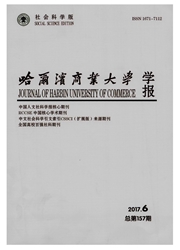

 中文摘要:
中文摘要:
在影响人民币汇率的众多因素中,选出GDP增长率、进出口差额增长率、货币和准货币供应量增长率、外汇储备增长率、中美相对消费价格指数、通货膨胀率和中美利差等7个影响人民币汇率的主要因素。选用了一种新的变量选择方法——自适应Lasso方法对人民币汇率影响因素进行有效的选择。同时使用真实数据作了实证研究,并与最小二乘法和逐步线性回归方法进行比较。结果表明:自适应Lasso方法在人民币汇率影响因素的选择方面,相对于逐步线性回归和最小二乘法有明显的优势。自适应Lasso方法不仅仅完成了模型的参数估计,同时也完成了对影响人民币汇率因素的筛选。
 英文摘要:
英文摘要:
Among many factors that affect the RMB exchange rate, we choose seven main factors that affecting the RMB exchange rate, these are the GDP growth rate, the increase rate of imports and exports balance, the growth rate of money supply, the growth rate of foreign exchange reserves, the increase rate of China - American relative price index, inflation rate, gap of China - American interest. Choose a new variable selection method - adaptive Lasso methods to select impact factors of the RMB exchange rate. We use real data to study, and compared with the least squares method and stepwise linear regression. The results show that adaptive Lasso is better than the least squares and stepwisc linear regression. By the adaptive Lasso method, we not only obtain the parameter estimation, but also get the impact factors of the RMB exchange rate.
 同期刊论文项目
同期刊论文项目
 同项目期刊论文
同项目期刊论文
 Large deviations for randomly weighted sums with dominantly varying tails and widely orthant depende
Large deviations for randomly weighted sums with dominantly varying tails and widely orthant depende Testing structural change in partially linear single-index models with error-prone linear covariates
Testing structural change in partially linear single-index models with error-prone linear covariates Robust estimation of constant and time-varying parameters in nonlinear ordinary differential equatio
Robust estimation of constant and time-varying parameters in nonlinear ordinary differential equatio 期刊信息
期刊信息
